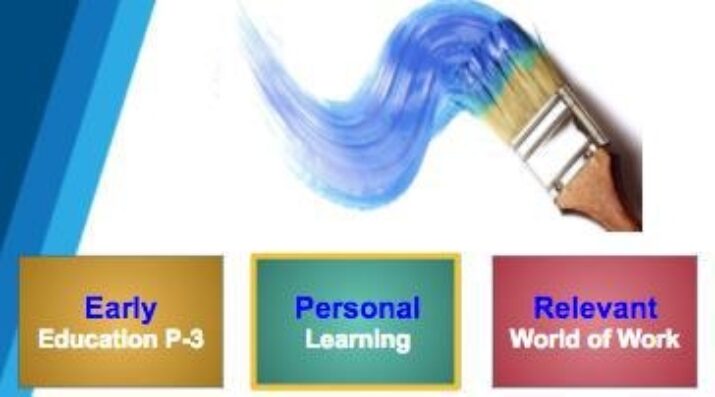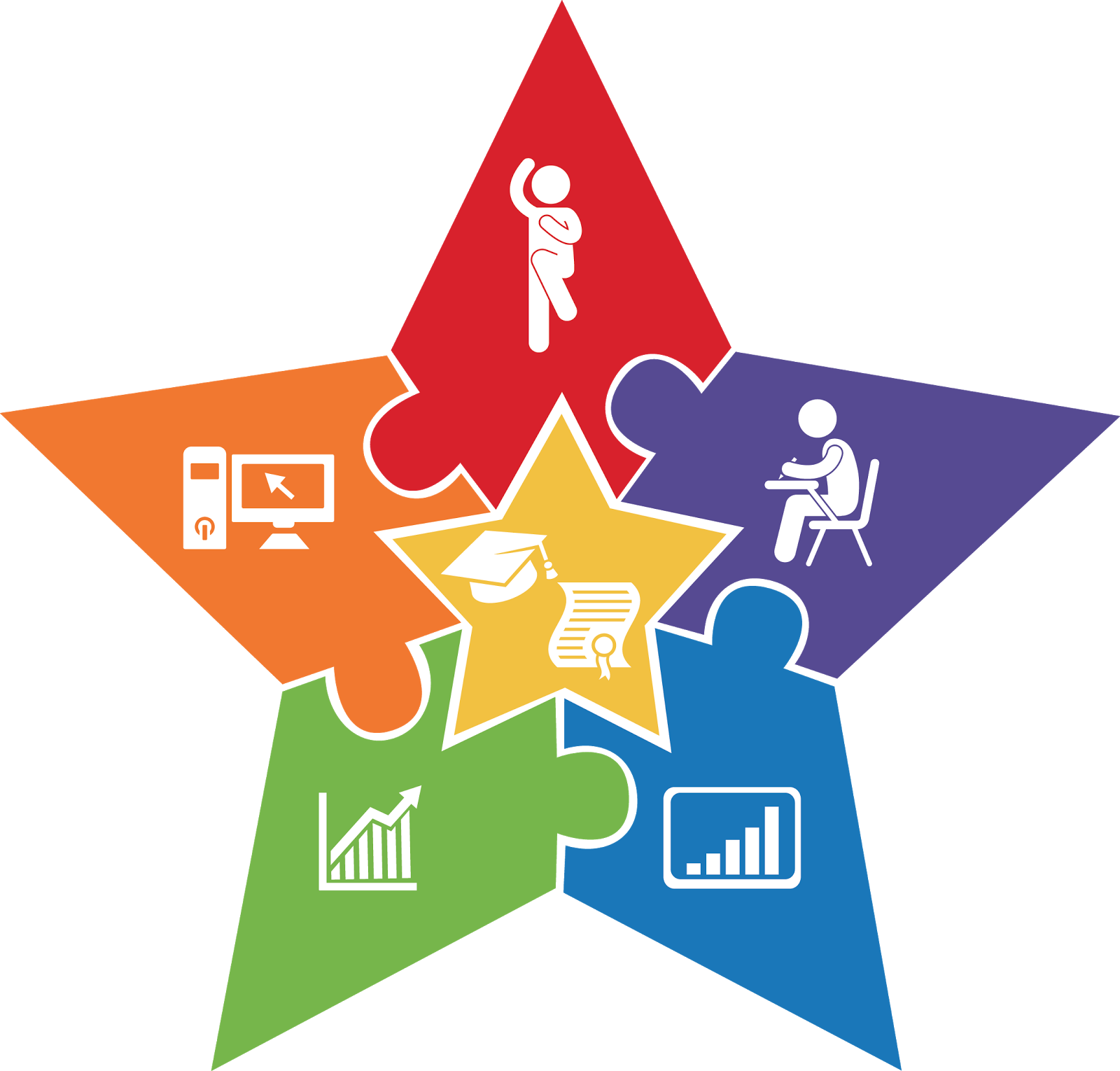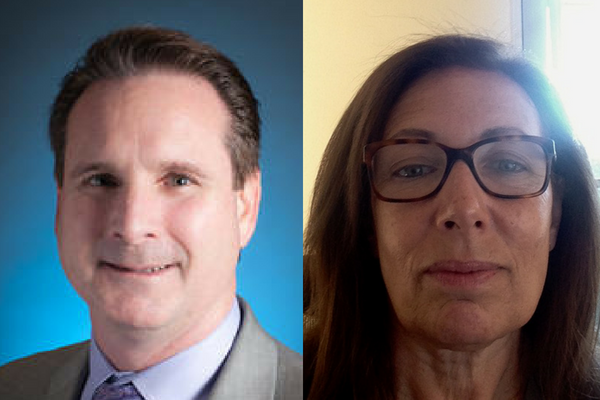New Designs for School
5 Lessons from Implementing Personal Learning
Topics

We’ve all had the experience of truly purposeful, authentic learning and know how valuable it is. Educators are taking the best of what we know about learning, student support, effective instruction, and interpersonal skill-building to completely reimagine schools so that students experience that kind of purposeful learning all day, every day.
The transformation to Personal Learning at Vista Unified has been guided by the work of pedagogy experts, Allison Zmuda and Bena Kallick. In their book, Students at the Center, they define Personalized Learning as a “progressively student-driven experience where students have a role in co-creating investigations and ideas.”
In this blog post, we focus on perhaps the most important of Vista Unified’s Three Brushstrokes, Personal Learning. The transformation to Personal Learning at Vista Unified has been guided by the work of pedagogy experts, Allison Zmuda and Bena Kallick. In their book, Students at the Center, they define Personalized Learning as a “progressively student driven experience where students have a role in co-creating investigations and ideas.”

One hundred percent of Vista Unified’s schools are now engaged in the Vista Unified Personal Learning Challenge designed by Interim Superintendent Dr. Matt Doyle. Application and engagement took place in three waves, beginning three years ago. The journey is designed as the “Moonshot” for the school district that will fully transform the learner experience over the course of ten years.
Recently, district consultants conducted an informal survey of Vista Unified principals and assistant principals seeking their definition of Personal Learning resulting from the experience of on-the-ground implementation. Here are the results and light analyses of those conversations.
Let’s begin with some background on the Personal Learning Challenge. One important note is that the Vista Unified transformation is being driven by guiding philosophy and pedagogy. It is not being driven by a specific interface or technology. While personal learning interfaces will be needed, and the district is experimenting with several, the transformation is being driven strategically rather than tactically. To engage, the PL Challenge requires an application which in turn requires that principals think through the meaning of Personal Learning for their school. This strategic thinking process comes at a time when schools are part of the broader landscape of school choice. So understanding how Personal Learning will impact the “why” of a school is key to the acceptance of the application. This is also key to the definitions of Personal Learning received during our recent survey. For most principals, in parallel with most students, Personal Learning is a journey both in their understanding as well as their implementation of it. Think of our PL Challenge as a process that is intended to build the capacity of our staff to create space for students to become stewards of their own learning.
These five lessons learned stand out:
- Personal Breadth—Longitudinal Insight and Support: Personal learning brings greater focus to the individual student. For principals and teachers, this focus has sparked a greater interest in knowledge about the student’s family background and past learning experiences. School leaders are looking into the breadth of past learning experiences to learn more about who an individual student is today and how a present-tense learning environment can serve them best. We call this approach “Every Student By Name.”
The impact is a personal P-20 student focus and the result is students and families who are supported throughout their learning careers.
The longitudinal experience takes into account the future as well. Teachers at Vista Unified remain in contact with students throughout their school journey via email or social media, hoping to be a point of contact and advice in the future should a student consider dropping out or when a student needs to make a big decision around school choice, college, or career. This approach creates a continuum of supports that last beyond the four walls of the classroom. - Personal Entry Points: Principals have found an approach to personal learning when curriculum is a standard requirement. Teachers can’t always change what students learn, but they can design “personal on-ramps” to content. ”Meeting students where they are” and building a bridge to the lesson requires that teachers have the skills to (1) determine where students are, and (2) design an instructional bridge. This shifts the teacher’s role from purveyor of content to activator of learning.
The impact is enhanced teacher collaboration and shared creative problem-solving around ways to reach every student. The result is inclusion of every student in lessons that are primary to instructional achievement.
”Meeting students where they are” is typically accomplished through a combination of getting to know students and formative assessment tools. Designing a bridge requires new instructional design skills for some teachers which ranges from identifying different levels of difficulty, to creating examples that may peak student interest, to changing the medium of delivery on the bridge from print to video or a group activity. - Agile Personal Environment: Principals believe that each student is unique and by viewing multiple aspects of the learning environment, a unique construct can be created that best fits each student's needs. This construct considers options including virtual office hours with teachers for individual and group homework help, innovative learning spaces to signify various lessons, a variety of learning apps that meet different interests, and more.
The impact is that students learn how to progress in their work while understanding their own individual work style and what works best for them. The result is agility on the part of the teacher and the student to rapidly employ and dis-employ different tools and techniques. One way to think about it is that the teacher shifts from a one-size-fits-all methodology to more of an improvisationalist—adapting support and activation based on where the student is taking their learning.
-
Personal Learning Readiness Skills: The relationship between teachers and students changes profoundly when a shift is made to personal learning. Students must be ready to engage in that shift. “Voice, co-creation, student agency, and inquiry-based learning” are skills and attitudes that require a growth mindset. Left unaddressed, a gap can be unintentionally created between those students with “personal learning readiness skills” and those without. Teachers need to be sensitive to this gap with the goal of ensuring that all students will have the skills and mindset to be the drivers of their own learning path. “Personal Learning Readiness Skills” are defined as the ability to:
- express student voice
- recognize one’s own interests, strengths, and values
- be proactive in inquiry based learning
- be accountable for one’s own learning path and achievement
- contribute proactively to team and individual learning with creativity and critical thinking skills
- Personal Intervention: For one principal, Personal Learning equals “personal intervention.” Their goal is to ask teachers to use a variety of intervention tools early and continuously to determine a student’s strengths, interests, and values. Personal intervention goes beyond formative assessments to understanding the student’s environment.
The impact is a shift in focus to a much broader view of the student as a holistic individual and the result is greater student ownership, engagement and happiness. This is a large part of the shift of Personal Learning. In traditional classrooms, the environment is defined as the classroom as the centerpoint, guided by the teacher, with extensions to library and home. By contrast, a personal learning environment is defined by the student as the centerpoint and so all aspects of the student, including health and social-emotional wellness, become part of the ongoing pathway.
Collectively, the principals of Vista Unified see Personal Learning as a driver of multiple classroom strategies--specifically enabling stronger, more insightful connections with each student. At Vista Unified, “students at the center” is being implemented using the “every student, by name” approach. As personal learning grows and principals grow with it, principals seem to collectively acknowledge that the accountability of their role is even more deeply connected with the success of each and every student, holistically.
With thanks to Principals Krista Bernsten, Laura Smith, Sandra Ceja, Chuck Schindler, Rachel Schmidt, Juan Ayala, Cindy Anderson, Kim Morton, Steve Bailey, Cheree McKean, Lori Higley, Nicole Miller, Tracy Zachry, Susan Ford, Bill Porter, Jen Golden, Rafael Olavide, Charlene Smith, Mike Sterner, Steve Post, Sochie Schmitz, Heather Golly, Catina Hancock, and Stephanie Vasquez.




